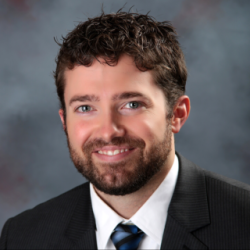In the evolving landscape of health care, the relationship between ophthalmology and optometry is often characterized by rivalry and discord. Turf wars over scope of care and political skirmishes have created a divisive environment, leaving both patients and clinicians at a disadvantage. However, my experience in a rural private practice setting demonstrates that collaboration, rather than competition, can lead to exceptional patient care and improved work-life balance for physicians.
I have the privilege of working in a unique partnership with optometrists, a model that defies the typical antagonism between our two professions. This collaborative approach has allowed me to maintain a balanced life while delivering high-quality care to my patients. By sharing overhead costs and responsibilities with my optometry partners, I am able to work four days a week, which is significantly less than many of my solo practice colleagues. This arrangement not only keeps operational costs manageable but also ensures that our staffing levels are higher than average, enhancing our ability to provide comprehensive care.
One obvious component of our successful collaboration is the use of a shared EMR system. This shared EMR streamlines communication between optometrists and ophthalmologists, significantly reducing administrative burdens and saving valuable time. The seamless exchange of patient information allows for more coordinated and efficient care, ensuring that patients receive the right treatment at the right time. This technology integration is a pivotal factor in our ability to provide high-quality care while maintaining a manageable workload.
Moreover, our combined staff is exceptionally well-trained, benefiting from exposure to the entire scope of patient care. This comprehensive training ensures that they are not only proficient in their specific roles but also understand the broader context of patient management. This depth of knowledge and skill enhances the overall patient experience and allows our practice to operate smoothly and effectively.
Practicing in a rural location offers unique advantages that contribute to both physician satisfaction and patient convenience. In our setting, I have the opportunity to practice to the full extent of my training and comfort level. This autonomy allows me to provide a wide range of services, reducing the need for patients to travel long distances for specialized care. For many patients in rural areas, access to comprehensive eye care close to home is a significant benefit, saving them time and reducing the burden of travel.
Additionally, being in a rural location means I am not stepping on the toes of subspecialists in larger urban centers. Instead, I can provide them with a steady stream of referrals for conditions that are beyond my expertise. This collaborative referral network ensures that patients receive the specialized care they need while allowing subspecialists to focus on the most complex cases. It’s a win-win situation that benefits everyone.
The benefits of this model extend beyond patient care. Physicians across the country are grappling with overwork and the inability to advocate effectively for their patients in an environment of decreasing reimbursement. In contrast, my practice allows me to maintain a healthy work-life balance. Living in a watershed zone between larger health care markets, I have access to a steady stream of patients and enjoy the professional satisfaction that comes from working with like-minded partners who are equally committed to our mission.
The trend among younger physicians to eschew private practice in favor of employment by large health care organizations is understandable but comes with significant drawbacks. While these positions offer stability, they often come with a loss of autonomy. Physicians find themselves subject to the dictates of administrators and financial experts who may prioritize profit over patient care. In scenarios where private equity takes the reins, the focus shifts from providing excellent patient care to maximizing revenue, a shift that inevitably leads to burnout.
Just as financial health in our personal lives hinges on maintaining a margin, so too does our professional well-being. Having control over our schedules and the flexibility to practice medicine according to our values is invaluable. The arrangement I have with my optometry partners exemplifies how a well-structured partnership can create this margin, allowing us to work efficiently and effectively while preserving our personal time and energy.
In conclusion, I urge my colleagues not to shy away from innovative practice models. By choosing partners who share your commitment to patient care, you can create a practice environment that supports both your professional and personal well-being. Independence in practice is still attainable, and rural medicine offers a fertile ground for such collaborations. Protect your time and financial margins, and do not be afraid to think outside the box. The rewards, both for you and your patients, are well worth the effort.
Dr. Clifford Brooks III is a Seymour, IN-based ophthalmologist with experience in cataract surgery, medical retina, and minimally invasive glaucoma surgery. An Indiana University School of Medicine alumnus, he served eight years in the United States Air Force before moving back closer to home and jumping into private practice.
Animation by Diana Connolly






